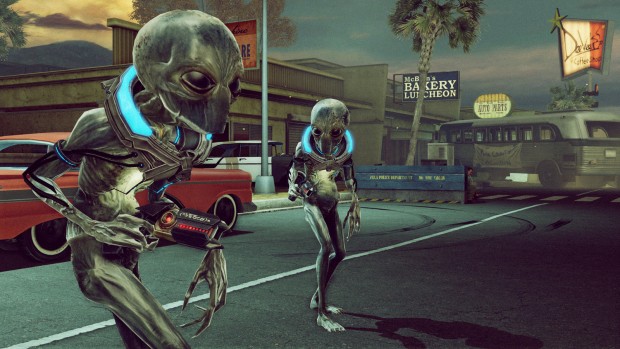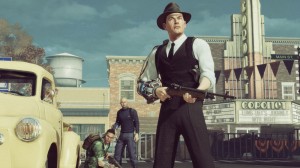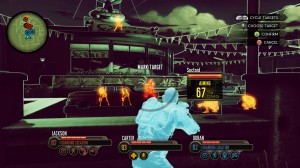The Bureau: XCOM Declassified – 5 Things You Should Know
- Updated: 13th May, 2013
 The Bureau: XCOM Declassified’s live-action trailer published at the end of April marked its third “reveal” since 2010. Back then, it was… let’s say poorly-received by fans. In the past 3 years however, we’ve seen the release of a “real” XCOM update for strategy fans with XCOM: Enemy Unknown, which has helped smooth the way for a different take on the franchise, albeit a rather US-centric retconned version.
The Bureau: XCOM Declassified’s live-action trailer published at the end of April marked its third “reveal” since 2010. Back then, it was… let’s say poorly-received by fans. In the past 3 years however, we’ve seen the release of a “real” XCOM update for strategy fans with XCOM: Enemy Unknown, which has helped smooth the way for a different take on the franchise, albeit a rather US-centric retconned version.
I spoke to senior producer Nico Bihary from 2k about the game’s story and the noticable similarities between this version and last year’s Enemy Unknown. Watch the interview and gameplay footage here and you’ll recognise many of the enemies and UI symbols.
Here’s what I learned from getting hands-on with the game:
1. It’s a shooter set in the US
The Bureau is now a third-person shooter with tactical elements. Set during the 60s, around the time of the Cuban Missile Crisis, the US has been building up their defenses, anticipating invasion by the Russian. Instead, the aliens came and the anti-espionage Bureau was forced to change their focus over to alien research.
I played a 30-minute hands-on demo, taking our protagonist William Carter, into battle to rescue fellow agent Da Silva who vanished along with his team on a mission in Pima, New Mexico.
Off we go to Pima and it’s all American suburbia – bungalows, gardens, school buses. Only the houses are destroyed, cars have jumped the kerb into the gardens and the school bus has a large “Evacuation” banner hanging from the side and has smashed into a wall. These aliens were on a terror mission and it looks like they succeeded.
XCOM fans will know that the XCOM initiative has always been a global programme with funding from many nations. I’m choosing to believe that this story is simply the US’s story of what caused them to opt into the programme. I will be very unimpressed if the story ends in a U-571-style Americanisation of them founding the entire XCOM programme.
2. You can customise your three-man squad.
 Prior to each mission you pick two squad members. Each team member has a class and gains new skills when levelling up:
Prior to each mission you pick two squad members. Each team member has a class and gains new skills when levelling up:
- Engineer: Land mines and turrets
- Commando: Taunts and more aggressive powers
- Recon: Sniper
- Support Officer: Medic
Everyone wears a backpack that imbues powers and healing from the technology you research back at the base. Squad members will gain XP throughout the missions from combating aliens and discovering new technology. You can’t change their hair or faces but you can customise their names and pick the colour of their clothes or camo. I put my William Carter in a natty Michael Jackson-inspired combo of black shirt, trousers and white vest. He looks good on the field and, rather more importantly, I no longer think of LA Noire’s Cole Phelps every time I see him.
At certain points in a mission, you’ll come across a resupply crate where you can change weapons, switch your loadout and, bizarrely, swap members of your squad in and out. We’ll deduct points for realism but carry on regardless because it’s a game. Game logic. You can’t switch the individual colours on real-world camouflage clothing either.
3. You control your squad directly
The command wheel (known as Battle Focus) looks and behaves a lot like Mass Effect’s. Your three squad members have different sections of the wheel and it merely slows down the action, never pausing the game. Where everyone in Mass Effect is effectively a one-person army, The Bureau places much more emphasis on working with your teammates. Use the engineer to lay down a mine and get your commando to taunt enemies into it.
You also need to specify where they stand and what they shoot. If they kill an enemy they’ll keep shooting away at whatever’s nearby but they’ll also ask for orders. Constantly. They’ll also come running to resuscitate you if you go down. Make sure you do the same for them because if they die, they’re gone along with all their training.
4. There’s a strong focus on story
The Bureau: XCOM Declassified tells the story of how XCOM came about (from the American perspective) and what the aliens did to the
Well, it’s more like two types of mission and a menu option.
Major Operations: These are the story missions that form the core of the game. Apparently certain choices you make will affect the outcome of the human population. [Spoiler warning!] In the section I played, Agent Da Silva was infected by an alien disease. There was a dialogue choice between having him stay behind to delay the oncoming enemy while my team pursued another objective, or airlifting him out to investigate the infection.
 Minor Operations: In these missions you go out with a specific objective. These are basically opportunities to try out new tactics, level up your soldiers and recover new technologies. You’ll gain powers like a telekinetic lift, a devastating pulse wave to throw opponents back, or weapons technology to move you from standard bullets to lasers, to plasma weapons.
Minor Operations: In these missions you go out with a specific objective. These are basically opportunities to try out new tactics, level up your soldiers and recover new technologies. You’ll gain powers like a telekinetic lift, a devastating pulse wave to throw opponents back, or weapons technology to move you from standard bullets to lasers, to plasma weapons.
Dispatch missions: These are non-playable missions designed to level up your rookie soldiers. Send them out to a mission through the map interface, hope they come back alive. Sounds a bit like the way you’d level up your team in Assassin’s Creed Brotherhood.
5. Battle tactics are key
While the unlabelled command icons in the Battle Focus wheel take some getting used to, the game itself is engaging. XCOM: Enemy Unknown fans will also recognise many of the enemies. In one battle I was faced with sectoids, an Outsider, a Muton (thankfully not a berserker) and the aforementioned Tech Commander.
 You need to manage your whole team and there are plenty of objectives on the battlefield to tackle. Spawn pods need to be destroyed or the enemy will just keep coming, and you need to watch out for key enemies like the Tech Commander who will create shields and turrets for his troops out of thin air. In this preview mission, Da Silva had rigged a courtyard with explosives, so a good portion of the battle was luring enemies into their range while staying out of it ourselves. Rather disconcertingly, shooting the explosives had no effect but it’s a a minor thing compared to the rest of the combat.
You need to manage your whole team and there are plenty of objectives on the battlefield to tackle. Spawn pods need to be destroyed or the enemy will just keep coming, and you need to watch out for key enemies like the Tech Commander who will create shields and turrets for his troops out of thin air. In this preview mission, Da Silva had rigged a courtyard with explosives, so a good portion of the battle was luring enemies into their range while staying out of it ourselves. Rather disconcertingly, shooting the explosives had no effect but it’s a a minor thing compared to the rest of the combat.
What I played of The Bureau: XCOM Declassified was gripping and enjoyable. While you’re still dealing with life-or-death scenarios, it’s not as fraught with tension as Enemy Unknown. Make a mistake and you have a short timeframe to resurrect your soldiers with magical alien healing spray but fail to see that they’re in trouble and they’re gone forever. As things play out in real-time, you’re forced to act and react quickly to the changing conditions, which will certainly keep you awake. Thanks to the third-person perspective, battles are chaotic, noisy, frantic and just plain fun.
Yes, it’s a different type of XCOM. That’s not a bad thing.

Follow Us!